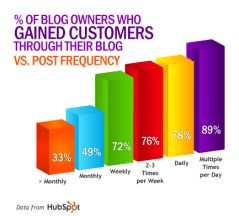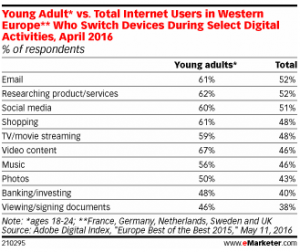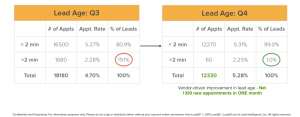Invoicing can be a daunting experience, especially when many entrepreneurs and freelancers are busy juggling their main work: social media marketing.
However difficult it may seem, invoices are crucial for getting positive cash flow, the real metric to determining the health and longevity of your social marketing endeavor.
In order to help you increase your monthly cash flow and boost your social marketing business, we’ll look at 5 tried and true ways to make your invoicing smarter.
Set your policies beforehand
One of the most important things for social media marketers to do when it comes to managing their invoices is to set very clear, direct general policies or Terms and Conditions.
When you create your T&Cs, you are actually giving yourself and your clients a reference point to how your invoicing processes should be going. These are general points that cover all your clients and will discuss the base payment and invoicing issues.
It’s important to mention here that these T&Cs are not just client-facing, but inward-facing as well, so that you can keep yourself accountable and be stricter in the way you deal with clients when it comes to invoicing.
Your T&Cs should include the following points:
- whether or not you’ll be taking any payments upfront and what percentage
- how many days will be allotted for the payment to be delivered
- whether or not you will charge late fees as a specific amount or a percentage of the invoice total
- what types of payment you’ll accept
Setting these up clearly will allow you to point to all your clients what can be expected of you and from them when it comes to payment. This will help you to clarify many issues and avoid any problems later on.
Automate as much as you can
As a social media marketer or manager, you are probably aware of the power of automation. Social media management usually revolves around a few key tools that help you to automate a lot of your daily tasks so that you can focus on other parts of the job.
However, very few social marketers connect this aspect with their invoicing. Instead, they go about the business of manually entering a lot of repetitive information about their clients. This usually means they have to sift through lots of emails to get the specific contact details or to decide what the next unique invoicing number should be.
Manual invoicing can be fine, especially with invoicing templates. However, online invoicing software was created to help small businesses and freelancers automate as much of their invoicing process as possible, giving them more time to focus on their main tasks.
This includes things like saved contact details and job descriptions, prices, etc. It also includes recurring invoicing (when you send similar invoices to the same client on a regular basis), expense tracking, and other features.
In this digital world, it should be a given that anytime you can automate something, you should do it. That way, you can focus on providing the best service to your clients and growing your business.
Be specific about the job in your proposal or quote
As opposed to your general policies from above, you still need to provide a specific job proposal to your social marketing clients.
This is the space where you can clearly help settle your client’s expectations. Be sure to answer the following questions:
- What is the timeframe for the delivery of services (if a one-time project)?
- What is the price for the service (per project or monthly/hourly)?
- What is the extent of the services (specifically, what will you and won’t you do)?
- What are the metrics to determine the success (or failure) of your services?
By addressing these issues clearly in your proposal or quote/estimate, you’ll be able to further avoid any confusion, delay, or outright payment refusal when it comes time to have your invoices paid.
Get your invoices out quickly
One thing that affects a lot of entrepreneurs, but freelancers especially, is the energy drain that accompanies a completed task. This happens when you are trying your hardest to complete a project or reach a goal in the waning days or hours of the agreed timeframe. With the amount of energy spent on that, there is great relief in having it done and notifying your client.
However, right after that, many social marketers want to just take a break—for an hour, a day, a week. And this energy drain then naturally leads to procrastination, where you should have sent the invoice out two weeks ago and still haven’t started on it.
This is one of the biggest reasons for not getting paid on time—simply, it’s because you didn’t send your invoices out on time.
One great way to fight against that is to use, online invoicing software. You could probably do your whole invoice, from start to finish, in less than a minute. Or, with regular customers and regular prices, setting up recurring invoicing would mean that you wouldn’t need to do anything at all. The software will do it for you.
Beyond that, it’s important to start putting your invoices together even before you’ve completed the task or the month is finished. This way, you can have a rolling invoice that you update for each itemized job so that you won’t have to do it all in one day.
Don’t hesitate to send payment reminders
The biggest reason that social marketers don’t have their invoices paid faster is because the clients just aren’t paying them on time. This happens a lot more than you think, and it can cause serious cash flow problems.
One reason that clients pay late is that they are busy and have simply forgotten. Another reason could be that they are holding off payment until their cash flow problems ease up. Either way, it’s your responsibility to remind them of their obligation to pay you on time.
The best thing to do is to send out a payment reminder to your client before the payment is actually due. The best payment terms is 14 days, and not the standard 30 days. So, for example, if it is day number 13, I will send a quick, polite email reminder that the payment will be due the following day.
If that payment isn’t delivered on the 14th day, I will send another email reminder on the 15th day. These emails are all polite, of course. However, that doesn’t mean they can’t be strict and direct. With the second payment reminder, the client should be able to provide payment or inform you when payment will be made.
For the rare case when there are further delays, you should skip the email and place a personal phone call. Direct interaction with the client will be enough to jolt him or her to recognize their obligations to provide payment for your completed services.
In general, the most important takeaway here is that smarter invoicing is possible if you follow these steps. Not only will you see better revenues and boosts in your social marketing business. You’ll also find that the relationships with your clients are improved and more professional.
Business & Finance Articles on Business 2 Community(26)
Report Post






